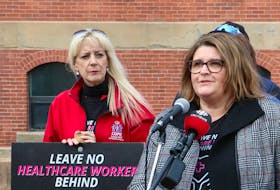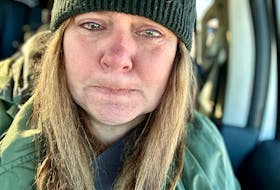I can’t tell you for certain the first time I heard about Southdown, the Ontario treatment centre where the Catholic Church has sent troubled priests for decades.

I can tell you that it was most likely in the mid-1980s, when a series of Roman Catholic priests were facing criminal sexual abuse charges in Newfoundland.
Southdown Treatment Centre is north of Toronto, and specializes in helping clergy.
As the centre says on its website, “Since those first tentative days, thousands have found relief from their difficulties, and most have returned to active ministry. Southdown’s programs and treatment services continue to evolve in order to remain flexible and responsive to changing needs of those committed to ministry.”
Some are dealing with alcoholism and substance abuse, others with depression. And some are treated for their sexual abuse of children.
Southdown was in the news again this week, when, as part of the disclosures of widespread historic sexual abuse by priests in Pennsylvania, it was revealed that at least 11 abusing priests were sent to the facility — and that some of those priests abused youth in Canada.
Now, there’s no doubt that Southdown has helped clergy.
But that’s not why I remember the name so well. No, I remember it for something else, something that the centre itself may have had nothing to do with.
For archdioceses in Newfoundland and other Atlantic provinces, it had another role: it made problems go away.
Offending priests and brothers were moved out of the jurisdiction where the offences occurred, off to some other place where they weren’t supposed to be a problem anymore.
Except when they were.
And should the police arrive with questions about the conduct of clergy, they could be reassured that the good Father was getting treatment, that he was safely out of town and wasn’t ever coming back. Not only that, but, given that he was in the process of treatment, it wouldn’t be right or proper to interview Father Whomever about whatever kind of malfeasance he was alleged to have been involved with. Interviews with police would be difficult and problematic — and police officers would have to travel to conduct the interviews, too.
Offending priests and brothers were moved out of the jurisdiction where the offences occurred, off to some other place where they weren’t supposed to be a problem anymore.
That model led to findings like this by the Winter Commission into the Sexual Abuse of Children by Members of the Clergy in Newfoundland in 1990: “Priest X was sent to Southdown. Following his return he was assigned to a rural parish as parish priest, but there is no evidence that his conduct was effectively monitored either by the Archdiocese or by Southdown. This kind of post-treatment monitoring was not considered.”
Other clergy came from as far away as Australia, where a commission into sexual abuse by clergy was told, “In the late 1980s and 1990s, it was the practice of the Sydney Province to send members of the Order who had acknowledged allegations of abuse against them to specialist
treatment centres in the United States of America (St. Luke Institute at Maryland) and
in Canada (Southdown Institute, which used to be at Aurora, Ont.).”
For plenty of people, reporters and journalists among them, the role of Southdown in the overarching scandals of the Catholic Church is brand new.
For me, hearing that name is old, old news.
Pennsylvania Attorney General Josh Shapiro said this about the church hierarchy in a news conference last Tuesday: “They protected their institution at all costs. As the grand jury found, the church showed a complete disdain for victims. … The coverup was sophisticated. And all the while, shockingly, church leadership kept records of the abuse and the cover-up.”
Shocking, maybe.
Surprising? Not at all.
New? No.
All that is old is new again.
Russell Wangersky’s column appears in 36 SaltWire newspapers and websites in Atlantic Canada. He can be reached at [email protected] — Twitter: @wangersky.









